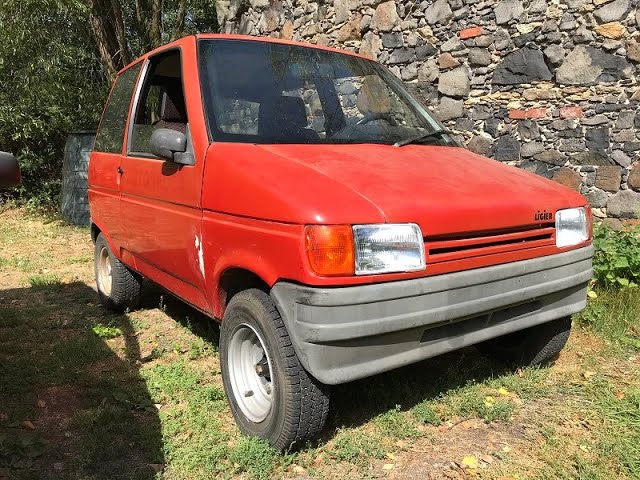

The Ligier Optima is a four-wheeled, two-seater microcar manufactured from 1987 to about 1995 by Ligier, the street vehicle branch of French Formula One manufacturer Équipe Ligier. There was also a four-seat version offered from 1993 until 1995, called the Optima 4. The car was originally introduced as the Ligier Série 7, but the name was changed to Optima in 1989. It replaced the earlier Série 5, the final development of a series of cars which started with the boxy Ligier JS4. Commonly, Optimas are "Voiture sans permis [fr]", light vehicles which do not require a driver's license and thus popular with the elderly, the young, or with those who had lost their driving privileges. Ligier also offered more powerful versions which could be driven with certain limited driver's permits and with very low annual taxes. Versions for export markets often had slightly different engine outputs to meet local requirements.
The car received a thorough facelift in November 1989, with orange front turn signals which wrap around the corners, and the name was changed to Ligier Optima. Initially, only the 265 cc diesel engine was on offer, but later there was also an Optima/Optimax Twin available. The two-cylinder versions received front disc brakes. A van with a built-out, boxier rear end along the lines of the Renault Express or the Citroën C15, was also available under the name Optimax. AutoTechnik Walther (ATW) kept on offering a 49-cc version with a German Sachs engine, to meet local needs for permitless operation.
ATW also developed a version with an electric motor, which they installed in their Bad Rappenau facilities. This version used the 10-inch wheels and drum brakes all around, period testers found this insufficient for a car which was 2.5 times the weight of the original and able to reach speeds of over 100 km/h (62 mph) in Power mode. The price was also elevated - with a few options, the price could easily reach DM 40,000 in 1993, equivalent to $53,187 in 2024 and the same as a base model Audi 100 at the time.